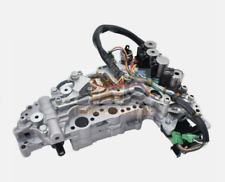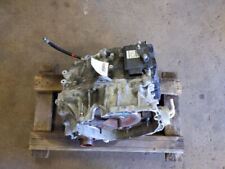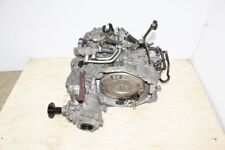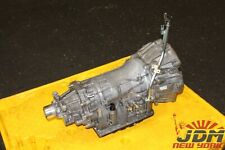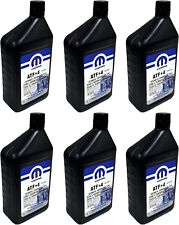GM producing Chevrolet Volt parts from oil-soaked booms from Gulf of Mexico

The Chevrolet Volt is a green car that is a big hit with mother nature and all the tree-hugging individuals out there. Well, the Volt is giving back to mother nature in other significant ways other than just offering better gas mileage and gas free driving.
Remember the big oil spill caused by the folks at BP in the Gulf of Mexico? General Motors has figured out a way to convert an estimated 100 miles of the material used to soak up oil in the region and use it as auto parts in the Chevrolet Volt. The move will help keep material out of the nation’s landfills and find new life in the Volt. Basically, 100,000 pounds of waste will be saved from the nation’s landfills.
Click here for more news on the Chevrolet Volt.
“Creative recycling is one extension of GM’s overall strategy to reduce its environmental impact,” said Mike Robinson, GM vice president of Environment, Energy and Safety policy. “We reuse and recycle material by-products at our 76 landfill-free facilities every day. This is a good example of using this expertise and applying it to a greater magnitude.”
Hit the jump for the press release for more details.
Refresher: The 2011 Chevrolet Volt is powered by 16-kWh, “T”-shaped lithium-ion battery that powers the electric drive unit, which allows it to drive 40 miles on battery power alone. The system puts out 149-hp and a maximum torque of 273 lb-ft, allowing the Volt to go from 0-60 mph in about 9 seconds, hitting a top speed of 100 mph. The battery can be re-charged by plugging into a household outlet and takes 4 hours to recharge on 240 volts, and about 10-12 hours on a standard 120-volt outlet. The Chevrolet Volt also carries an 84-hp 1.4 4-clyinder engine that allows the five-door, FWD sedan to travel additional miles while averaging a fuel-economy of 50 mpg. A fully charged battery and full tank of gas will allow the Volt to travel 340 miles. The 2011 Chevrolet Volt gets an EPA estimated 93 miles per ’gallon-equivalent’ when driving under electric power only, 37 mpg when in gasoline mode and over the long term it is estimated to get 60 miles per gallon in combined gasoline-powered and electric-powered driving. Prices for the 2011 Chevrolet Volt start at $41,000 but with a full federal income tax credit (which range from $0 to $7,500), the Volt can cost a total of $33,500.
2011 Chevrolet Volt:
Press Release:
Chevrolet Volt Components Created from Gulf of Mexico Oil-Soaked Booms
100,000 Pounds of Waste Saved from the Nation’s Landfills
Oil-soaked plastic boom material used to soak up oil in the Gulf of Mexico is finding new life as auto parts in the Chevrolet Volt.
General Motors has developed a method to convert an estimated 100 miles of the material off the Alabama and Louisiana coasts and keep it out of the nation’s landfills. The ongoing project is expected to create enough plastic under hood parts to supply the first year production of the extended-range electric vehicle.
Recycling the booms will result in the production of more than 100,000 pounds of plastic resin for the vehicle components, eliminating an equal amount of waste that would otherwise have been incinerated or sent to landfills.
The parts, which deflect air around the vehicle’s radiator, are comprised of 25 percent boom material and 25 percent recycled tires from GM’s Milford Proving Ground vehicle test facility. The remaining is a mixture of post-consumer recycled plastics and other polymers.
GM worked with several partners throughout the recovery and development processes. Heritage Environmental managed the collection of boom material along the Louisiana coast. Mobile Fluid Recovery stepped in next, using a massive high-speed drum that spun the booms until dry and eliminated all the absorbed oil and wastewater. Lucent Polymers used its process to then manipulate the material into the physical state necessary for plastic die-mold production. Tier-one supplier, GDC Inc., used its patented EndurapreneTM material process to combine the resin with other plastic compounds to produce the components.
The work in the Gulf is expected to last at least two more months and GM will continue to assist suppliers in collecting booms until the need no longer exists. The automaker anticipates enough material will be gathered that it can be used as components in other Chevrolet models.
“This was purely a matter of helping out,” said John Bradburn, manager of GM’s waste-reduction efforts. “If sent to a landfill, these materials would have taken hundreds of years to begin to break down, and we didn’t want to see the spill further impact the environment. We knew we could identify a beneficial reuse of this material given our experience.”
The world’s first electric vehicle with extended range, the Chevy Volt was recently awarded Green Car of the Year by Green Car Journal.
GM is dedicated to reducing its waste and pollutants, and recycles materials at every state of the product lifecycle. It uses recycled and renewable materials in its cars and trucks, which are at least 85 percent recyclable. Used tires, old plastic bottles, denim and nylon carpet are all redirected from landfills and reused in select GM vehicles.
GM facilities worldwide recycle 90 percent of the waste they generate. The automaker recently announced more than half of its worldwide facilities are now landfill-free – all manufacturing waste is recycled or used to create energy.
– By: Zain Haq








